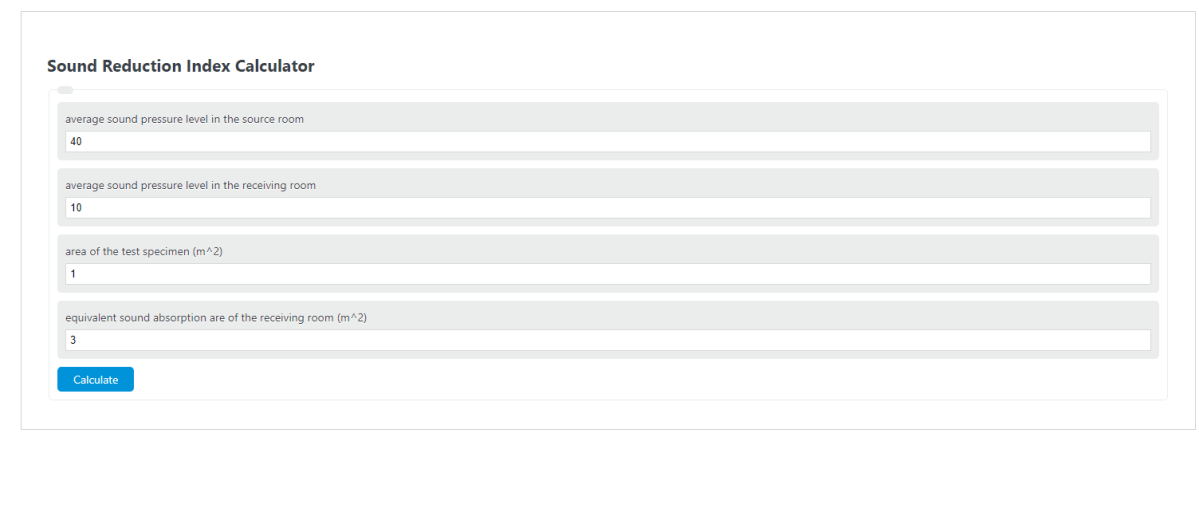Enter the average sound pressure level in the source and receiving room, the area of the test specimen, and the equivalent sound absorption area of the receiving room into the calculator to determine the sound reduction index.
- Sound Pressure Level Calculator
- Acoustic Foam Calculator
- TWA (Noise Exposure) Calculator
- Decibel Distance Calculator
- Sound Energy Calculator
Sound Reduction Index Formula
The following equation is used to calculate the Sound Reduction Index.
R = L1-L2 + 10 log(S/A)
- Where R is the Sound Reduction Index
- L1 is the average sound pressure level in the source room
- L2 is the average sound pressure level in the receiving room
- S is the area of the test specimen (m^2)
- A is the equivalent sound absorption area of the receiving room (m^2)
To calculate a sound reduction index, subtract the average sound pressure level in the receiving room from the source room, then add 10 times the log of the area of the specimen over the area of the absorption area.
What is a Sound Reduction Index?
Definition:
A sound reduction index is a metric used to measure the level of sound insulation a structure provides.
How to Calculate Sound Reduction Index?
Example Problem:
The following example outlines the steps and information needed to calculate Sound Reduction Index.
First, determine the sound pressure level of the source room. In this case, the sound pressure level is 40dB.
Next, determine the sound pressure level of the receiving room. In this example, this is measured to be 10dB.
Next, determine the area of the test specimen. This is calculated to be 1 m^2.
Next, determine the equivalent sound absorption area in the receiving room. This is measured to be 3m^2.
Finally, calculate the sound reduction index using the formula above:
R = L1-L2 + 10 log(S/A)
R = 40-10 + 10 log(1/3)
R =25.22
